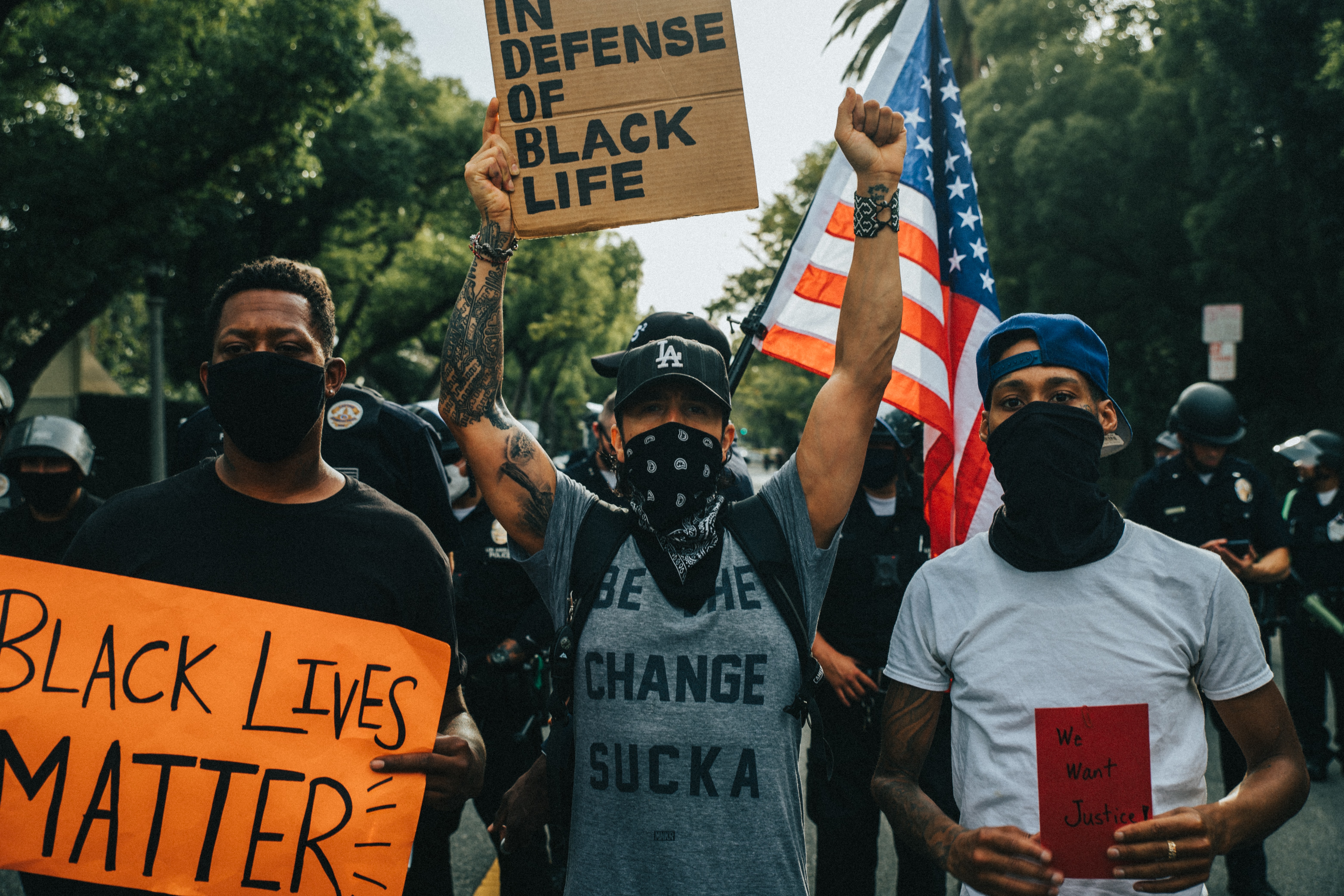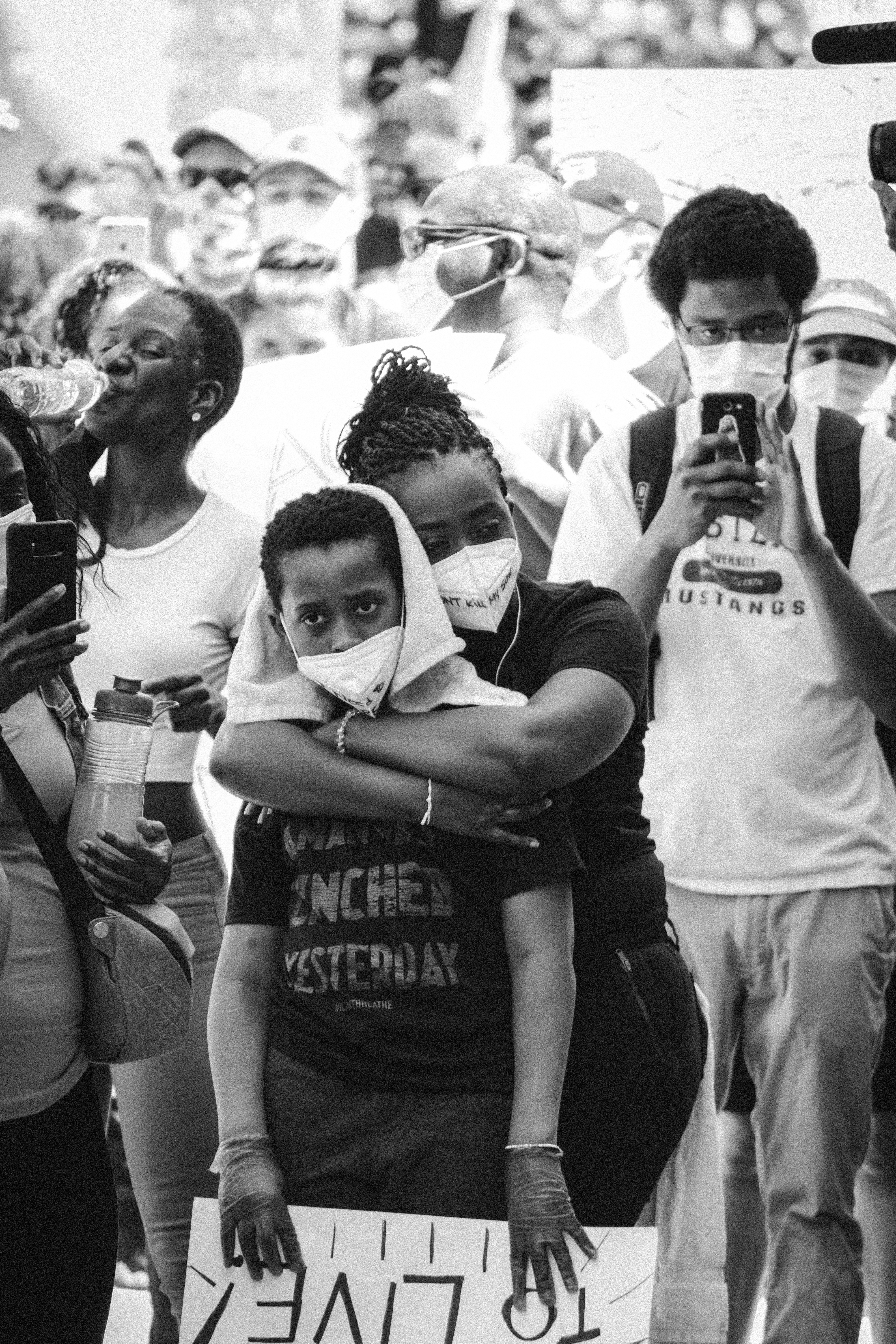“When we look at how everything combined, it was a perfect storm,” Melina Abdullah, co-founder of Black Lives Matter- Los Angeles, says. “We were in the midst of a pandemic, but that pandemic also meant that the outward-facing work that most of us do — hustling our children to and from school, hustling across freeways to our jobs outside of our homes — there was a necessary slowing of that. And so, when George Floyd was murdered, we watched all eight minutes and 46 seconds. We had to. There was no turning our heads.”
Abdullah is the chair of the Department of Pan-African Studies at California State University, Los Angeles; her work as an educator is widely renowned. But in 2020 the tenured academic was out in the streets — leading protests throughout LA to fight for racial justice. She was joined by tens of thousands of people, particularly young people, who raised their voices to stand up against systemic oppression.
That’s worth underscoring. As we look back on a year spent in quarantine, it would be easy to draw the conclusion that society was more isolated than ever. But there’s a story of connection to be told, too. The protests following George Floyd’s murder were the largest in American history — as an estimated 15-26 million people took to the streets to stand up for Black lives.
“We rose up,” Abdullah says. “And once we rose up, I think people got what we’ve been saying for seven years. ‘Black Lives Matter.'”

In 2020 — in the throes of a global pandemic — the Black Lives Matter movement gained tremendous momentum. Millions of Americans, day after day, taking to the streets. At its height, there was an average of 140 separate protests per day across the county.
People didn’t just want to protest, either. They wanted to know more, too; be more aware. Anti-racism book sales skyrocketed — at one point all ten non-fiction books on the NYT bestseller list were about racism. We even shifted the way we spent money. Searches on Yelp for Black-owned businesses went up 7000%.
And in November, people voted for change. Also in historic numbers.
“In 2020, leading up to the election, we were very clear that we have to build the vote and organize,” Abdullah says. “Black folks, especially, were pivotal in organizing voters to the polls — young voters, Black voters, voters of color. But once we win victories at the polls, we need to remember that we have to continue to engage with those elected officials to make sure that we hold them accountable.”

Abdullah sees a lot of “next steps.” Politicians who made big promises when their jobs were at stake will need to be pressed. Allies will have to stay in the fight. And the values that so many of us chanted about and painted on signs need to be applied to our day-to-day lives.
“Every year, and especially this year, we have something called Black Xmas with a website, blackxmas.org,” Abdullah says. “The three tenets of that are: build Black, buy Black and bank Black.”
With more and more vital resources like Black Xmas, along with guides for supporting Black entrepreneurs and restaurants, and scores of political and social justice organizations to get involved with, there’s literally no valid excuse for not carrying the energy of the protest movement forward. In that sense, 2021 offers a clean slate to take real steps toward racial equality. But the onus remains on all of us to keep pushing, keep listening, keep caring, and keep doing the work.
“I’m hopeful about what this movement means,” Abdullah says. “Black Lives Matter was measured to be the largest social justice movement in global history. And so that means there’s a willingness for the first time for people to really confront both individual and systemic racism. And I think that 2021 can move us forward in really meaningful ways with so many people having stepped into this work. We want to make sure that folks aren’t just saying Black lives matter; in 2021, we want to make Black lives matter.”

